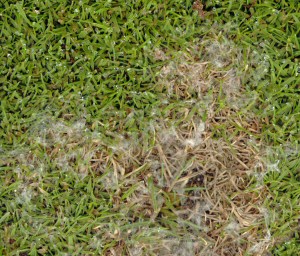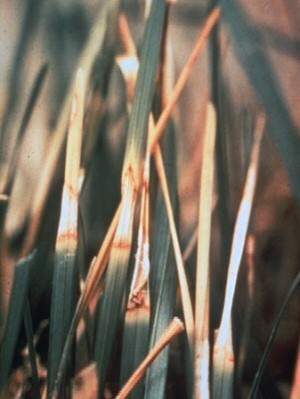Dollar Spot of Turfgrass
 Causal Agent
Causal Agent
Sclerotinia homeocarpa is the name that has been used for the fungus that causes dollar spot. However, recent studies have shown that the fungus most likely belongs in either the genus Lanzia or Moellerodiscus.
Hosts
Cultivated turfgrass species (bentgrass, bermudagrass, fescue, ryegrass, and zoysiagrass).
Symptoms

Control


